Sci-fi inspired Ferrari 12Cilindri replaces 812 Superfast, powered by 819bhp unassisted V12 engine (video)
A car name of which Ronseal would be proud
Will Ferrari ever stop producing cars with 12 cylinder engines? The men and women with suits and dark glasses at the factory in Maranello scoff at the idea, even in a world that is turning to electrification. Ferrari’s first car, the 125 S of 1947, had 12 cylinders under the bonnet, and ever since the brand has had a “12 pot” in its line-up.
So intrinsically linked are Ferrari and 12 cylinder engines, that its latest car, unveiled today, is actually called the Ferrari 12 Cylinder. Well, 12Cilindri, in fact, and we were told it should really be pronounced everywhere in the Italian style (“do-deech-ay chill-indree”), per favore.
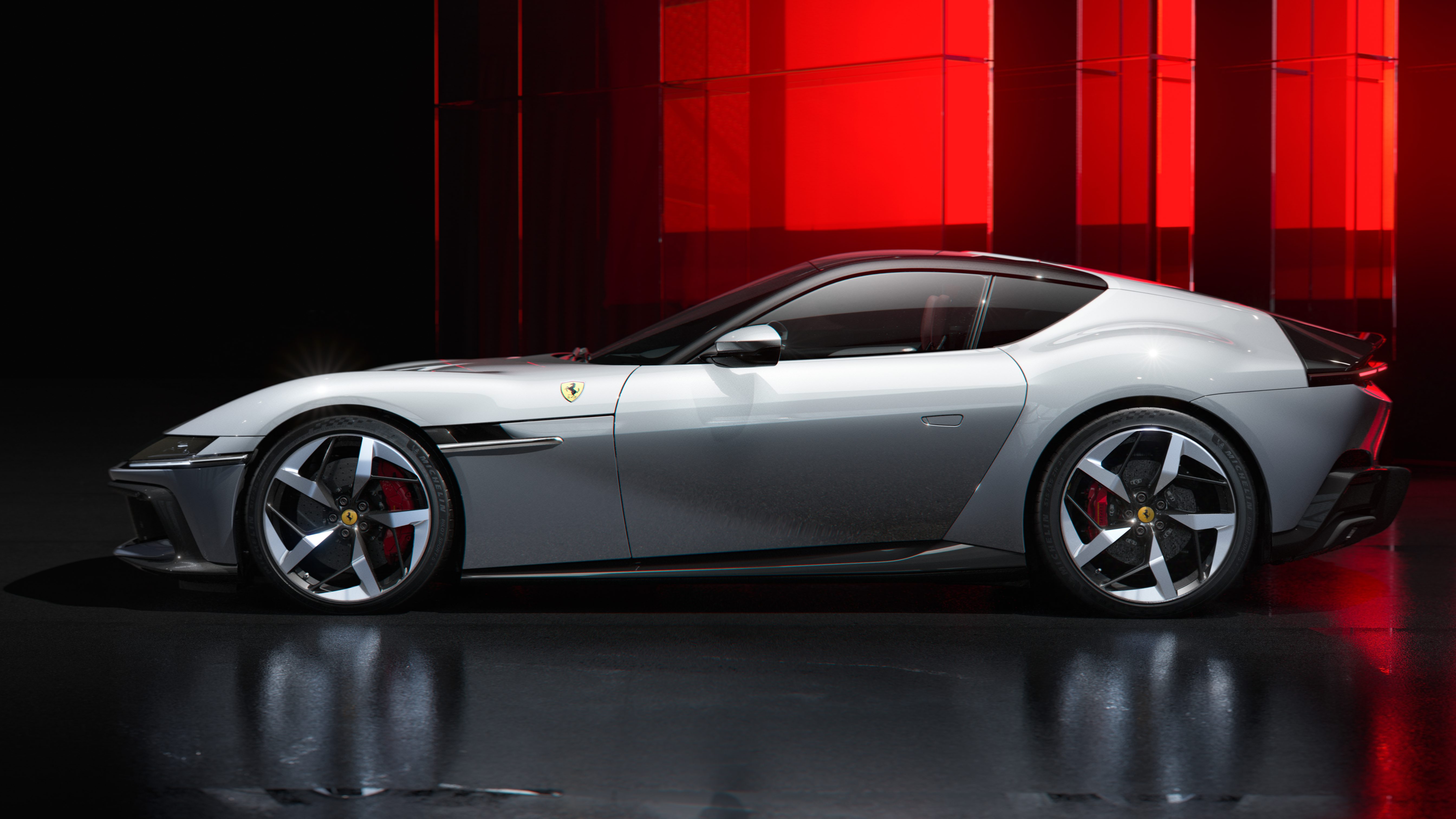
The new front-engined, rear-wheel drive, two-seater is available from launch in coupé and convertible (Spider) forms and slots right into the middle of the Ferrari range, replacing the 812 Superfast.
That car was the most powerful naturally aspirated, non-hybrid Ferrari when was introduced in 2017, with 789bhp. The new model sticks with unadulterated pure-petrol power, to the surprise of some at the car’s unveiling, and the V12 has been developed from the upgraded version in the 812 Competizione to produce even more performance: 819bhp — exactly equal to the output of the 296 GTB.
But the way the 12Cilindri puts down its power, and the way it sounds, will be wildly different to the 296 sports car, with its mid-rear-mounted V6 hybrid. The V12 can be revved to 9,500rpm, says Ferrari, with mechanical and software changes that help smooth out the torque delivery throughout the rev range.
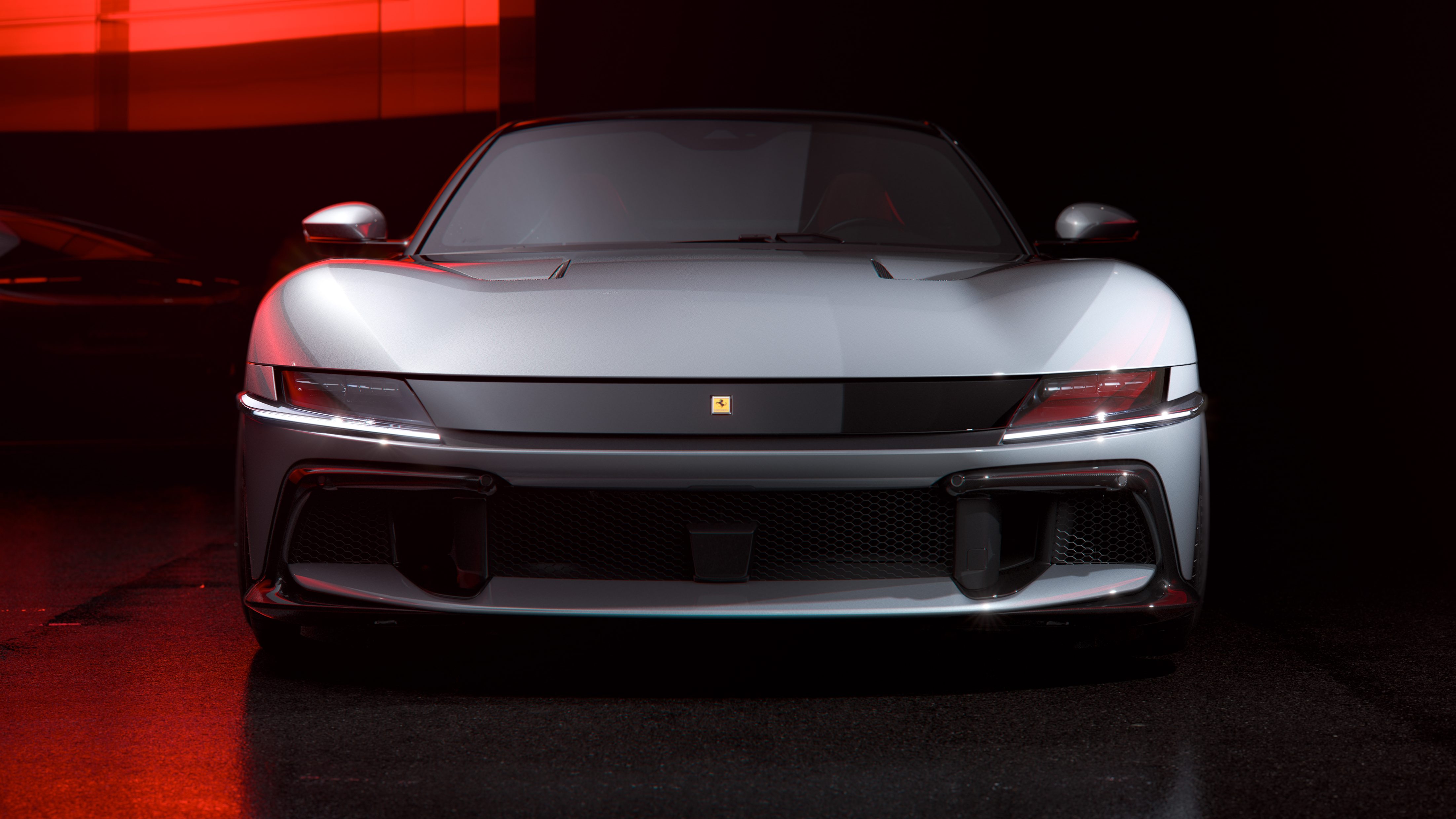
At the car’s unveiling in Maranello, Ferrari revealed that while function always comes before form in creating new models, where each car sits on the performance spectrum determines which team leads its development: the designers or the engineers. As the 12Cilindri is positioned in “the sweet spot between performance and comfort”, there were a few heated “battles” between the two departments, according to the head of design, though the final look is certain to appeal to fans of Ferrari GTs.
The designers said they wanted to follow the classic front-engined, rear-wheel drive layout of Ferrari’s classic grand tourers of the 1960s — and the body shape is clearly an evolution of those cars, as well as the F12 and 812 models that came before — but inspiration came mainly from futuristic concepts and even science fiction. Examples of such elements include the “visor” that links the headlights, which is reminiscent of the 1970s Ferrari 365 GTB/4 Daytona; itself a forward-looking grand tourer for its time.
And while there are muscular haunches above the 21in alloy wheels, which are hewn from solid metal blocks, the profile of the car is very much of a wedge shape, which has come to embody the futuristic car design efforts of the 1970s.
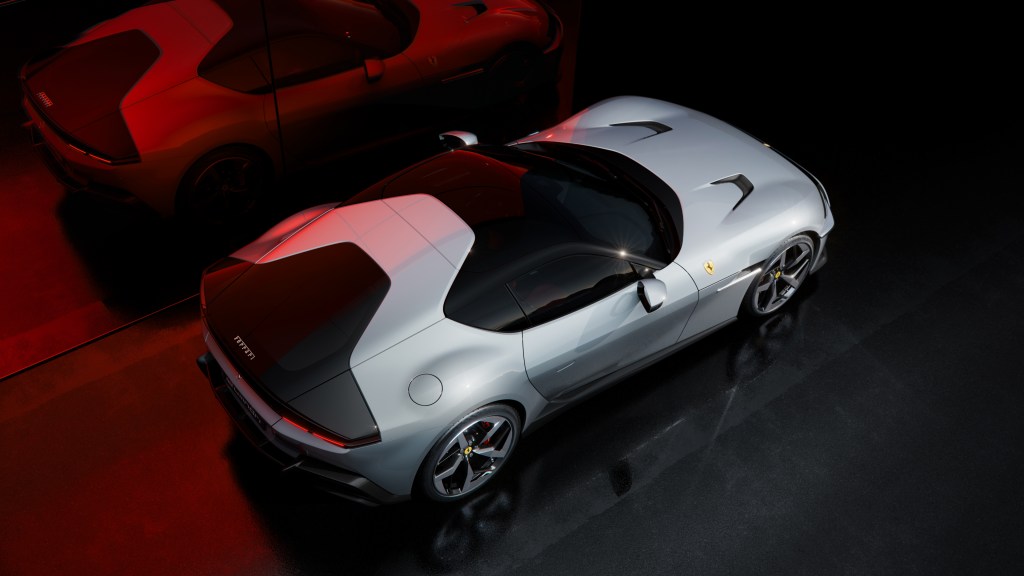
The design also incorporates a delta wing-shaped rear window and roof panel, which helps add to the space-age look, while an 812-like ducktail helps with airflow over the body.
In a first for a front-engined V12 Ferrari, though, the 12Cilindri also includes active aero elements, with extra downforce provided via two flaps at each corner that lift at speeds above 60kph. At 250kph, Ferrari says, they can provide 50kg of downforce at the rear, while at 300kph they lower again as the aerodynamic effect of the rear flick provides all the stability necessary.
Underneath, the floor is largely flat though three channels at the front help create vortices that aid “ground effect”, sucking the car to the road surface. These are complemented by carefully positioned louvres that keep dirty air from the radiator and wheels from interacting with those vortices and reducing their effect.
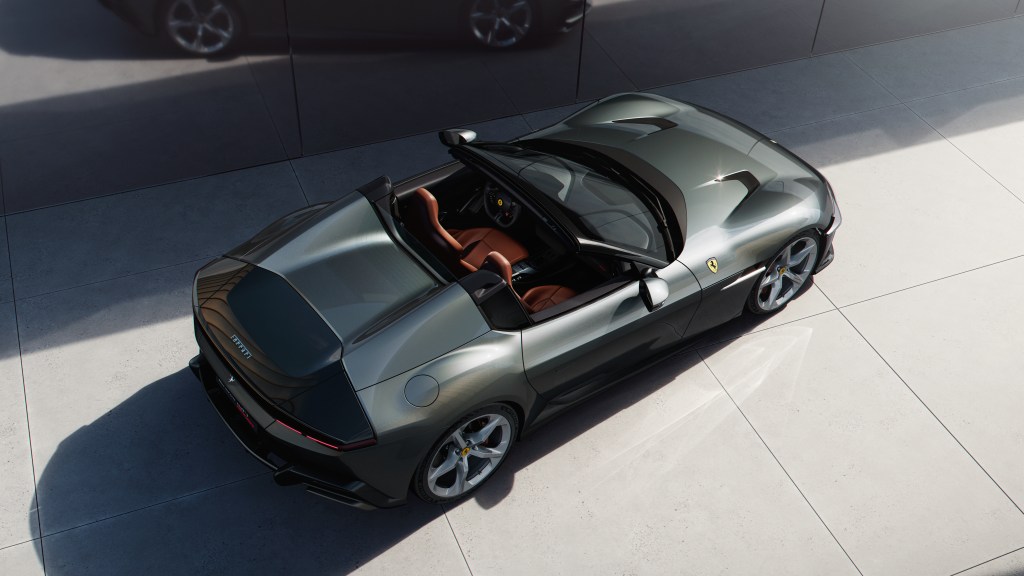
The 12Cilindri is built around all new underpinnings, made from recycled aluminium that increase stiffness over the 812 Superfast by 15 per cent, meaning less of the performance going to the rear wheels is lost through twisting in the chassis. Using recycled material also means a healthy reduction in carbon dioxide emissions during production, Ferrari claims.
Lifting the clamshell bonnet reveals the V12 heart of the car. Ferrari says the connoisseurs among their customers demand unassisted 12 cylinder motors still, particularly in places such as North America and the Middle East, and the company claims there’s nothing like the sound and drama of a V12.
Unlike with the recently revealed Aston Martin V12 powertrain, which is expected to be used on the new Vanquish, there’s no turbocharging on the 12Cilindri’s engine, and Ferrari has resisted adding an electric motor for hybrid assistance, too. That means its 812bhp is slightly down on Aston’s effort, which is expected to feature in an all-new Vanquish, but only by 12bhp, and the respective torque characteristics will make for very different types of cars.
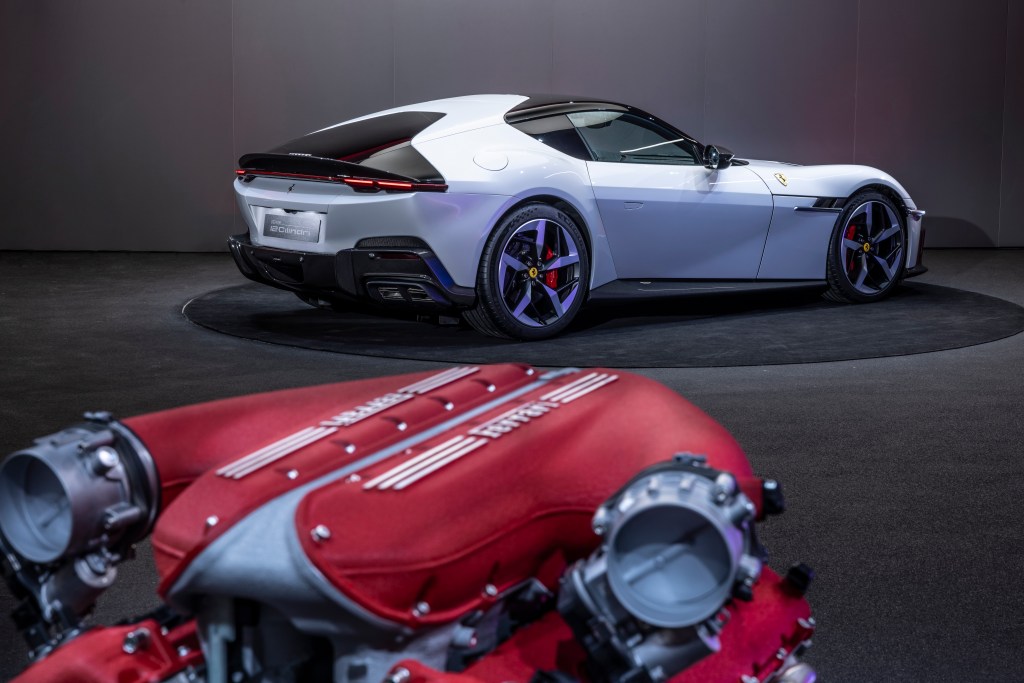
Components used in the 812 Competizione’s engine are carried over, though certainl other elements are further developments designed to flatten the torque curve and provide smooth, consistent acceleration throughout the rev range, with a focus on that mix between comfort and performance. Ferrari’s engineering chief said he was not chasing absolute speed with the 12Cilindri, rather what Enzo Ferrari called “instant speed”, and its V12 is a natural evolution of that first engine that the maestro himself sketched for the 125 S in the 1950s.
So while not as dedicated a track weapon as the likes of the SF90, the 12Ciilindri is most definitely no slouch — 0-62mph takes just 2.9 seconds and 0-124mph in 7.8 seconds, with a max speed of 211mph.
The engine is paired with an 8-speed dual clutch auto transmission — a change from the 7-speed gearbox in the 812 — with new gear ratios that increase torque at the wheels and make gearshifts about 30 per cent quicker.
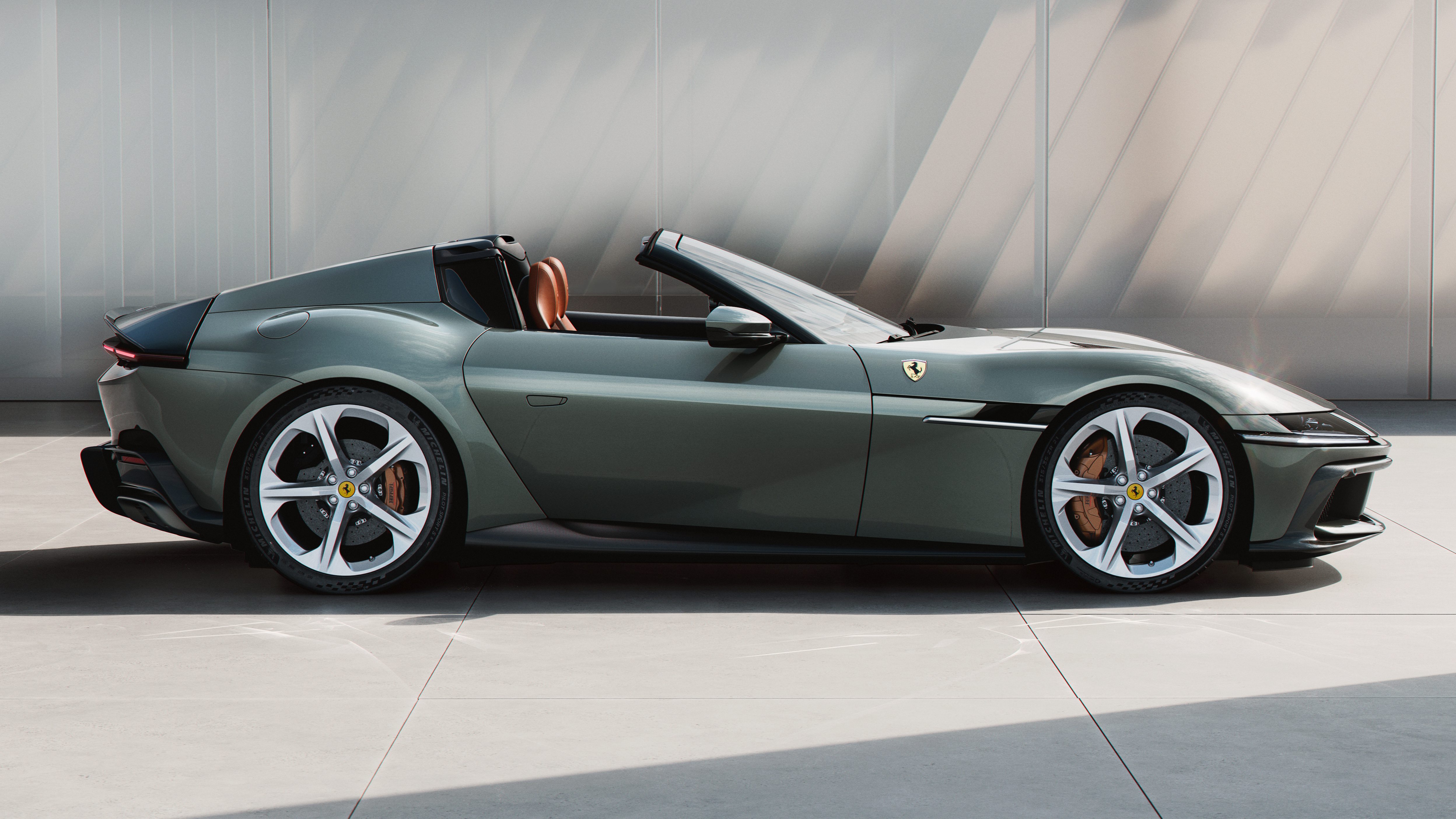
The launch presentation made no mention of the suspension as this is one area in which the components are carried over from the 812. However, Driving.co.uk was told that the 12Cilindri has a unique calibration and updated software management that puts it somewhere between the 812 Superfast and 812 Competizione in terms of dynamic feel.
Cornering and stability are also aided by rear-wheel steering, with each wheel able to turn independently of the other, depending on what the car’s brain thinks is needed at that moment to improve stability and cornering at different speeds. Ferrari claims that the car’s new systems mean even in the wet, the 12Cilindri is a car that’s easy to drive, though turning off all the driver aids, including stability control, allows drivers full reign to smoke the tyres to their hearts’ content.
The character of the engine, steering and damping can all be controlled through Ferrari’s steering wheel mounted Manettino dial controller, too.
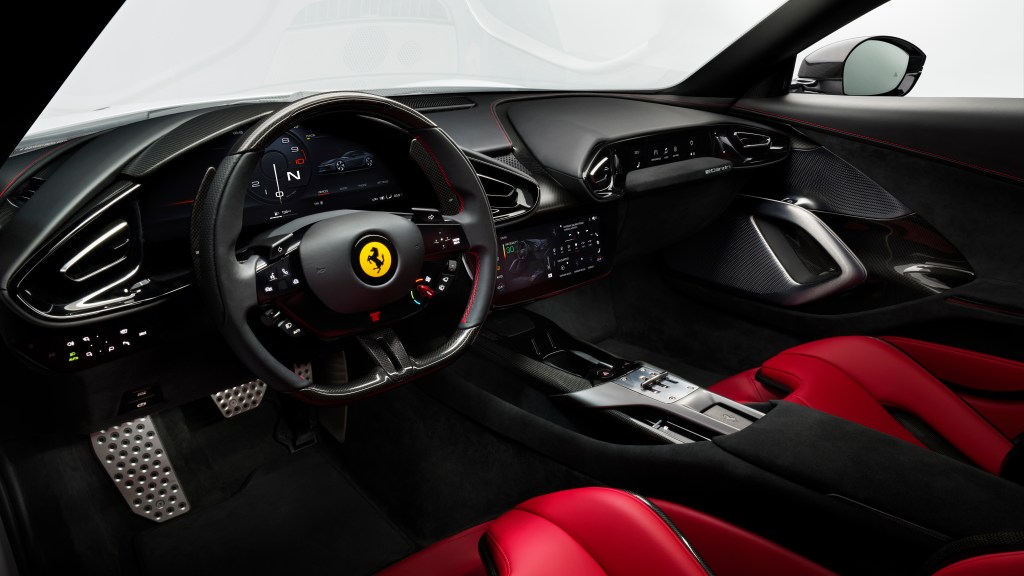
Inside there’s a double cockpit layout, similar to the Purosangue sports crossover, designed to make the driver and passenger feel cocooned, though a standout differentiation is the addition of a central touchscreen, which should make infotainment adjustments far easier.
Below that, the centre console features a delta wing design, linking it to the design of the rear of the car, and gives the drive selector control the appearance of floating above the storage space below.
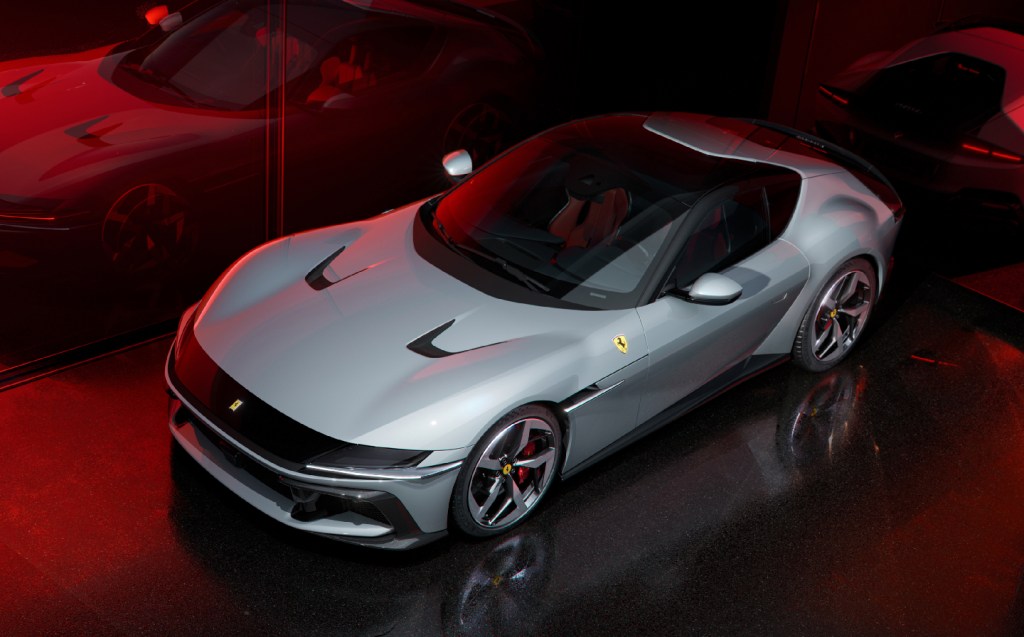
Prices for the 12Cilindri start at $395,000 (nearly £340,000) for the coupé, while the Spider attracts a premium of £34,000. Both are now on sale, with deliveries of the left-hand-drive coupé starting later this year and the droptop in early 2025. Expect right-hand-drive versions for the UK to arrive some time after the left-hand-drive models ship out.
Related articles
- If you were interested in the Ferrari 12Cilindri, you might like to read our review of the Ferrari Purosangue.
- Also check out our video walkaround of the extraordinary Ferrari SF90 XX Stradale
- And have you seen Ferrari’s electric car plans? It also confirms it will continue producing V6, V8 and V12 engines beyond 2030
Latest articles
- Porsche has begun testing the electric Cayenne
- Cupra Leon 272 eHybrid 2024 review: Bigger battery, better tech … but is it a Cupra?
- Porsche 911 GTS 2024 review: Hybrid heresy or more Stuttgart genius?
- Extended test: 2023 Vauxhall Astra Sports Tourer GS PHEV
- Ford Capri revival has faced a lot of flak… but are buyers put off? Here’s what visitors to the Festival of Speed had to say
- Aston Martin Valkyrie AMR-LMH hypercar hits track ahead of 2025 Le Mans challenge
- F1 2024 calendar and race reports: What time the next grand prix starts and what happened in the previous rounds
- ‘No timeframe’ for how long Volvo’s returning estate cars will be on sale in UK
- Kia Picanto 2024 review: Updates add spice to cute Korean city car













